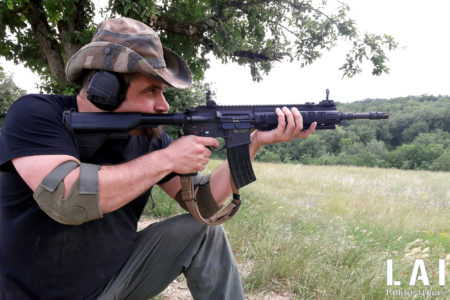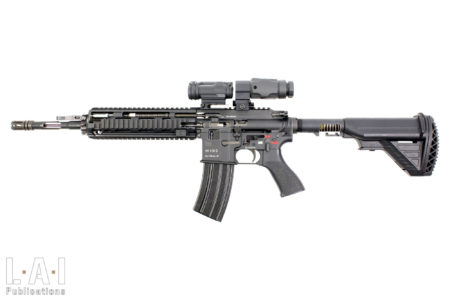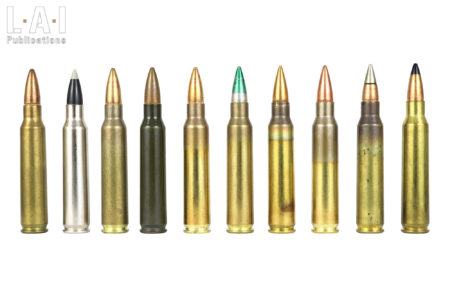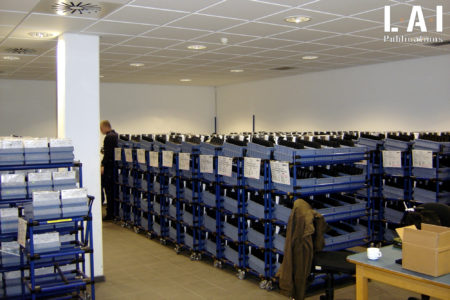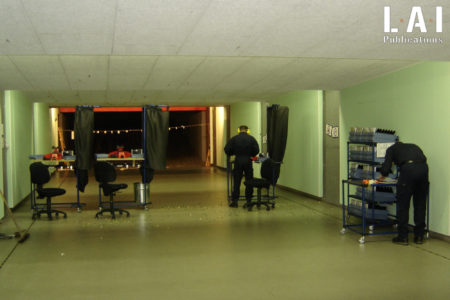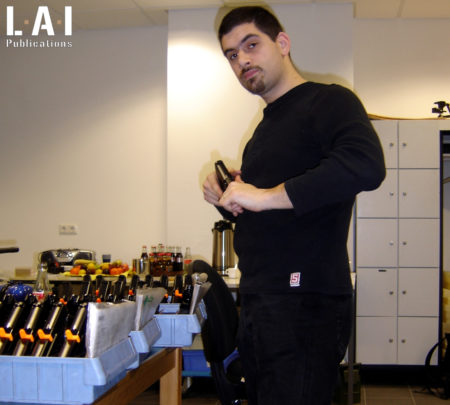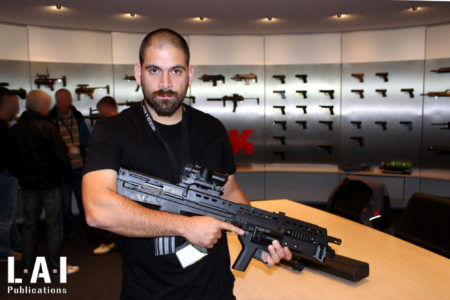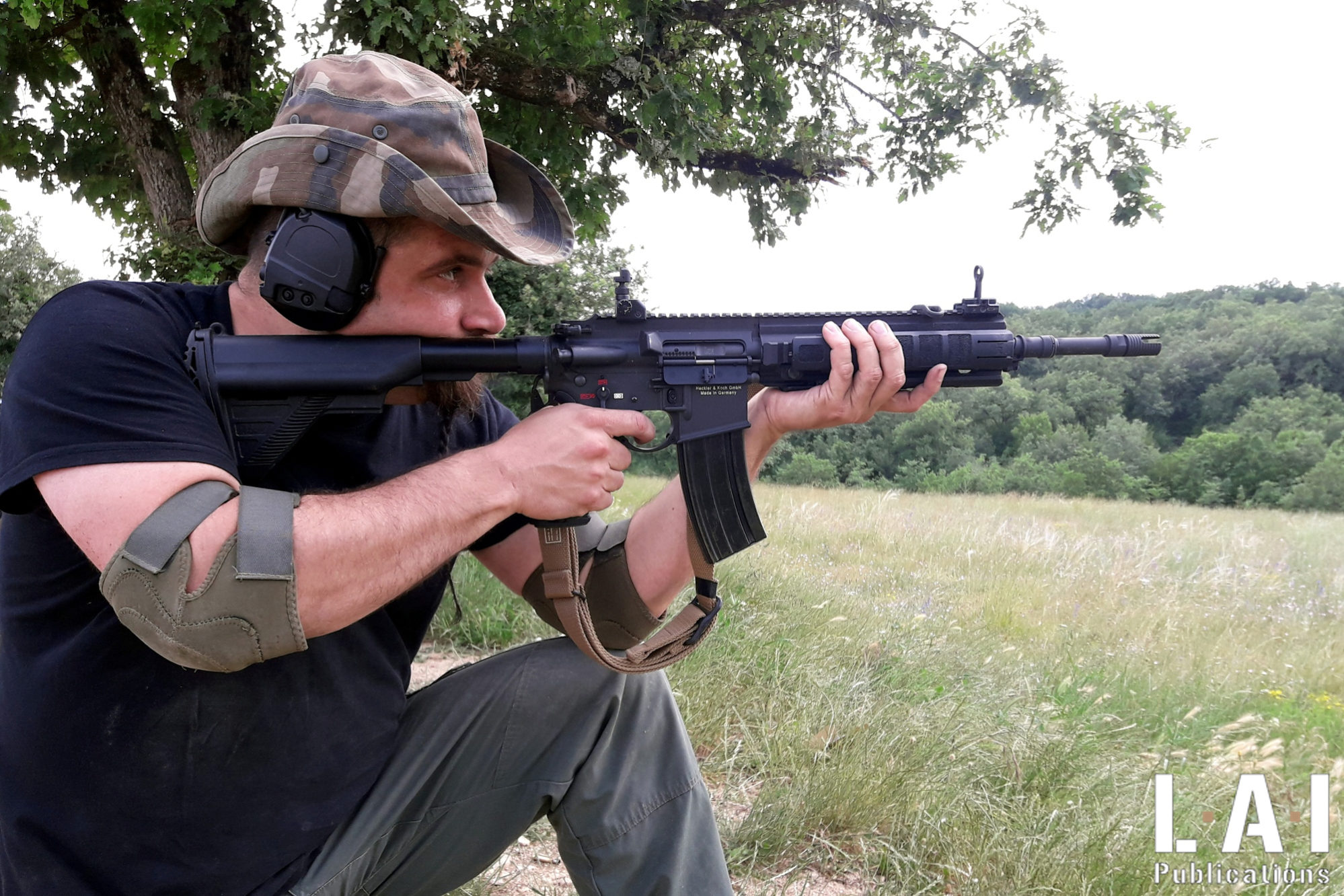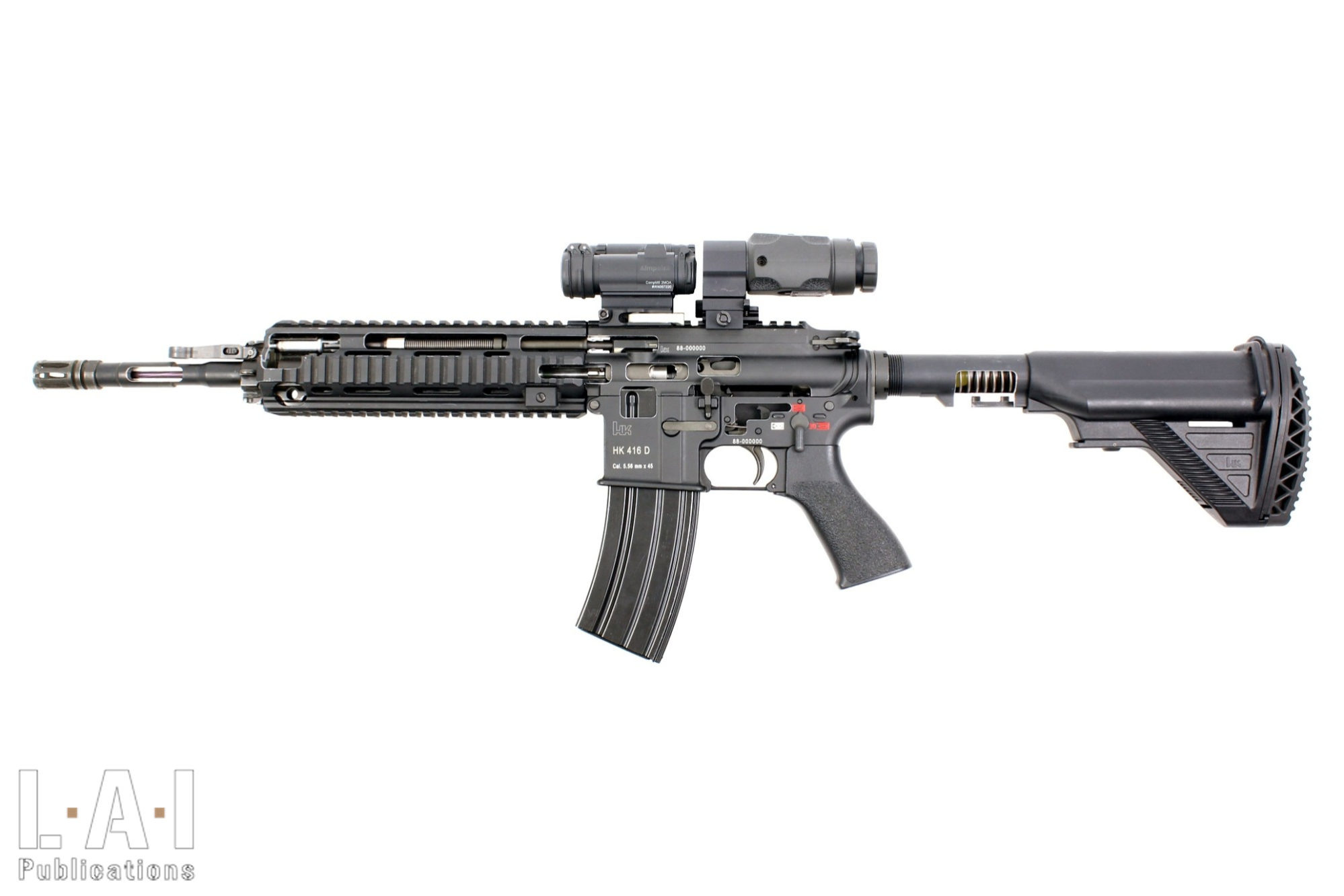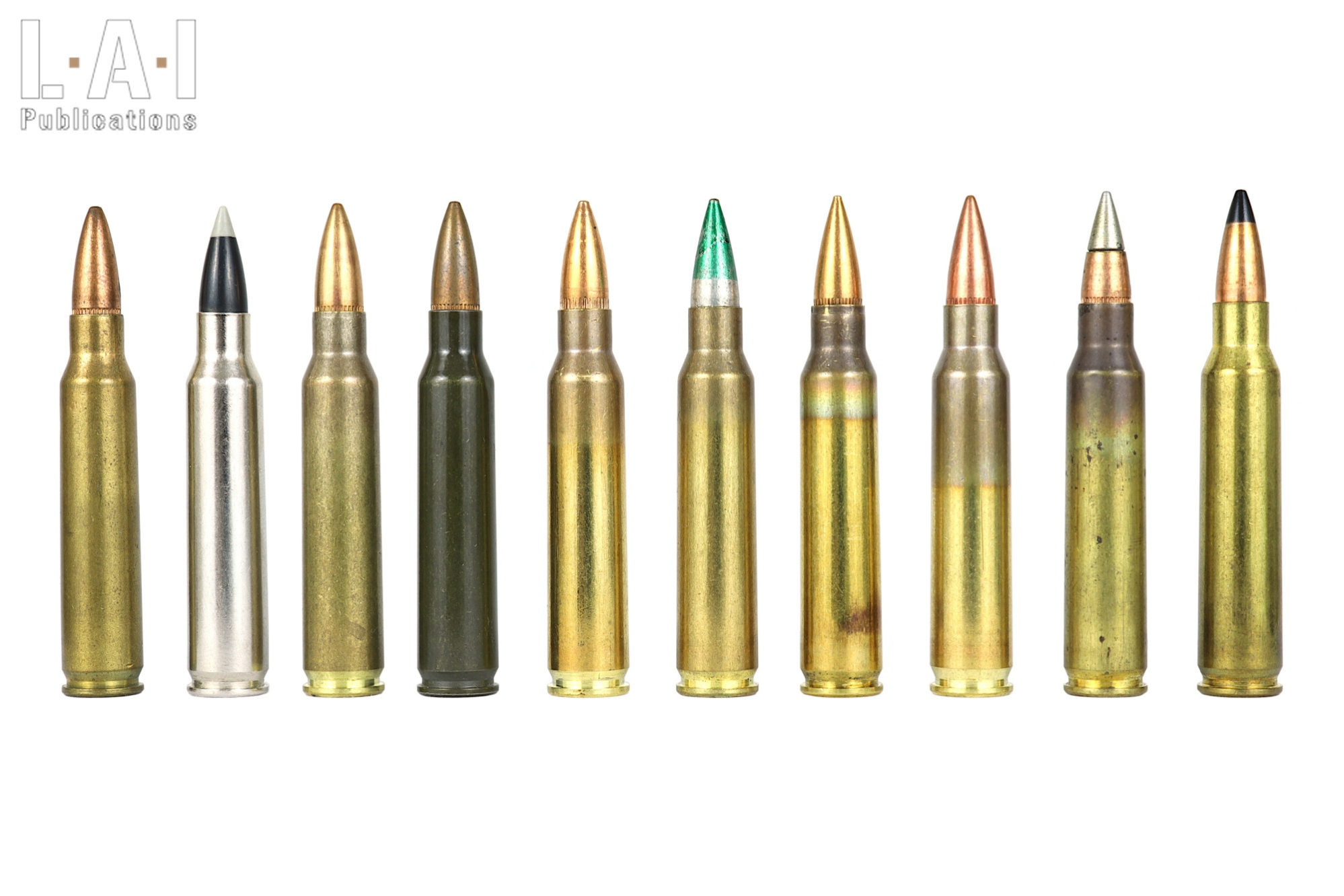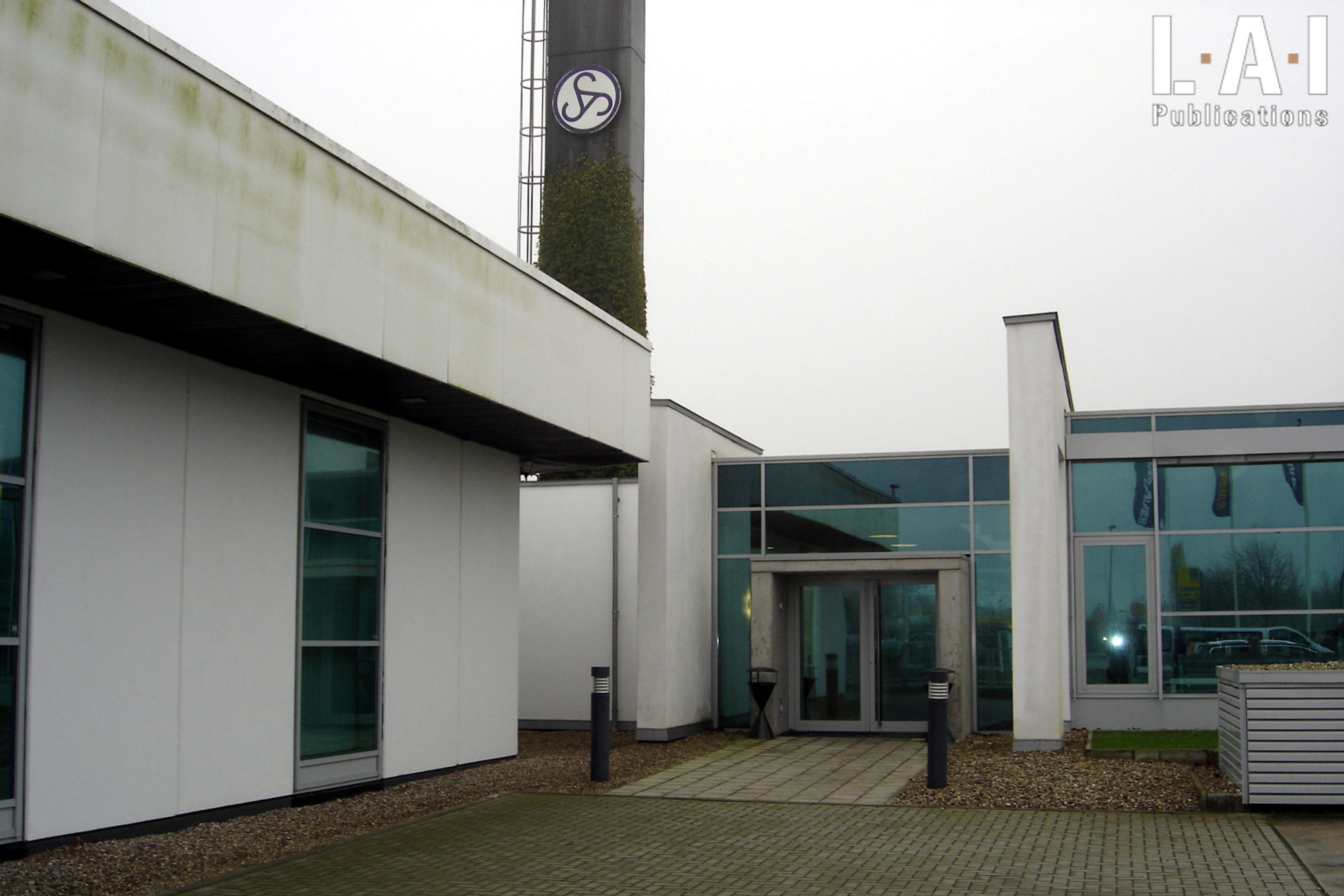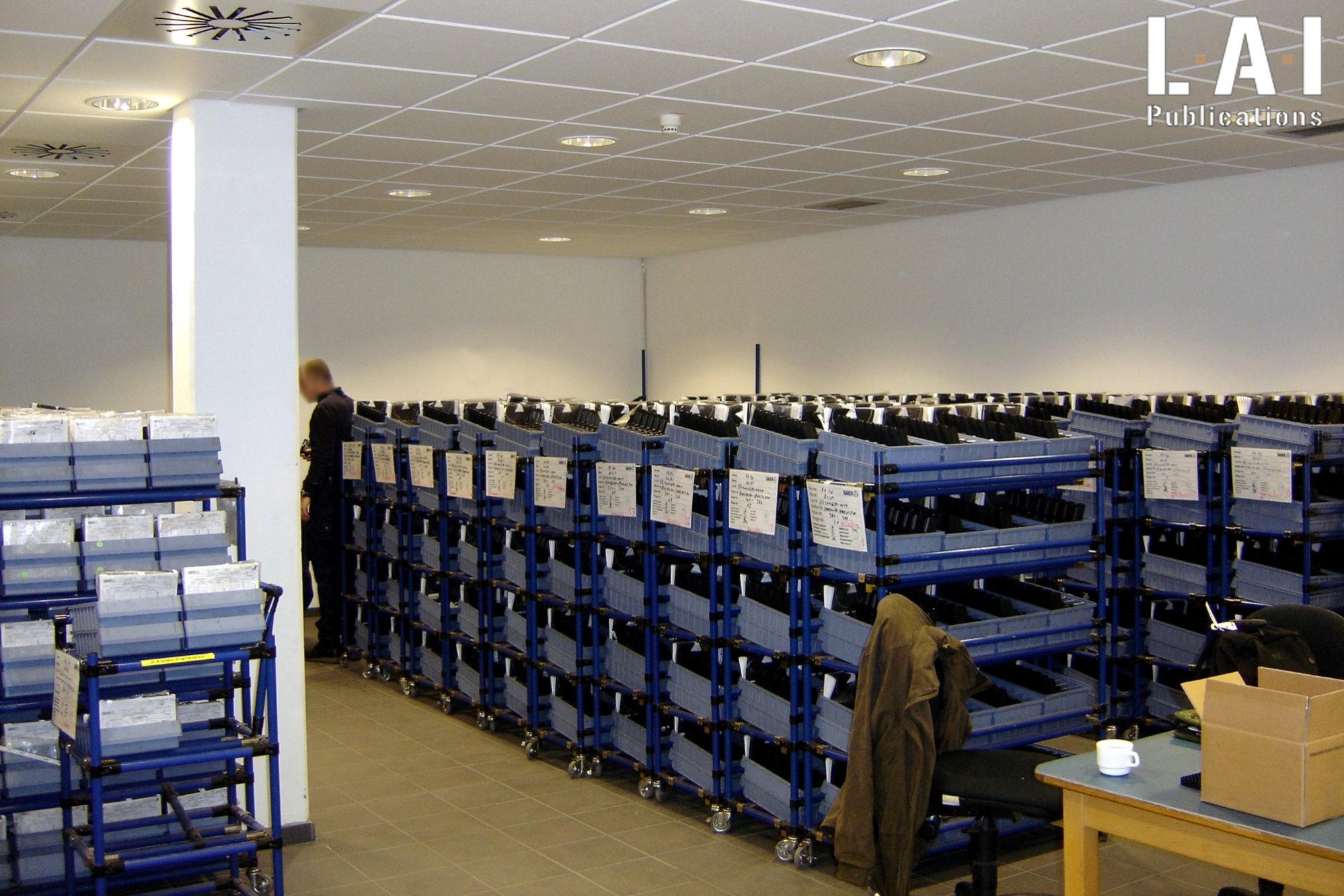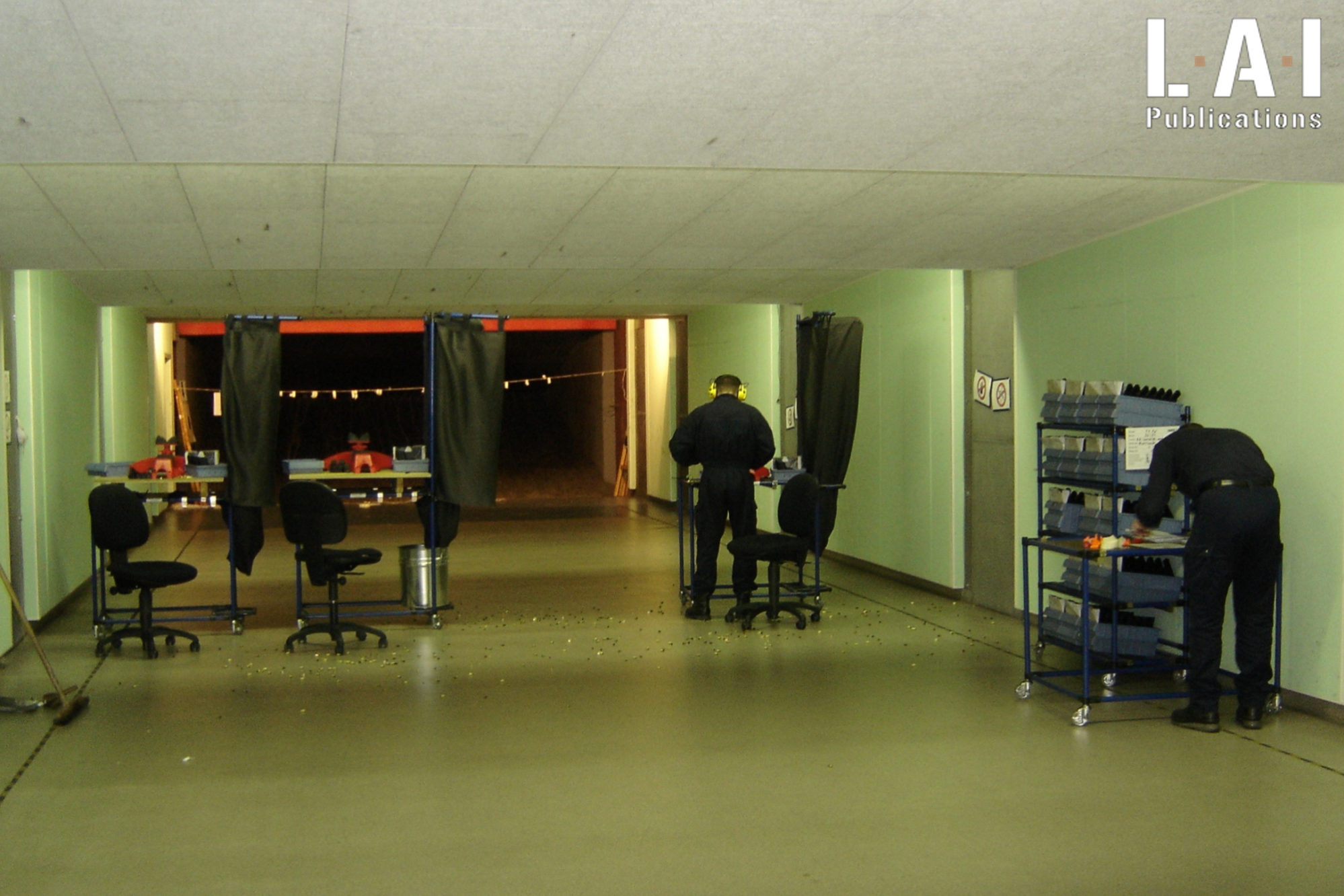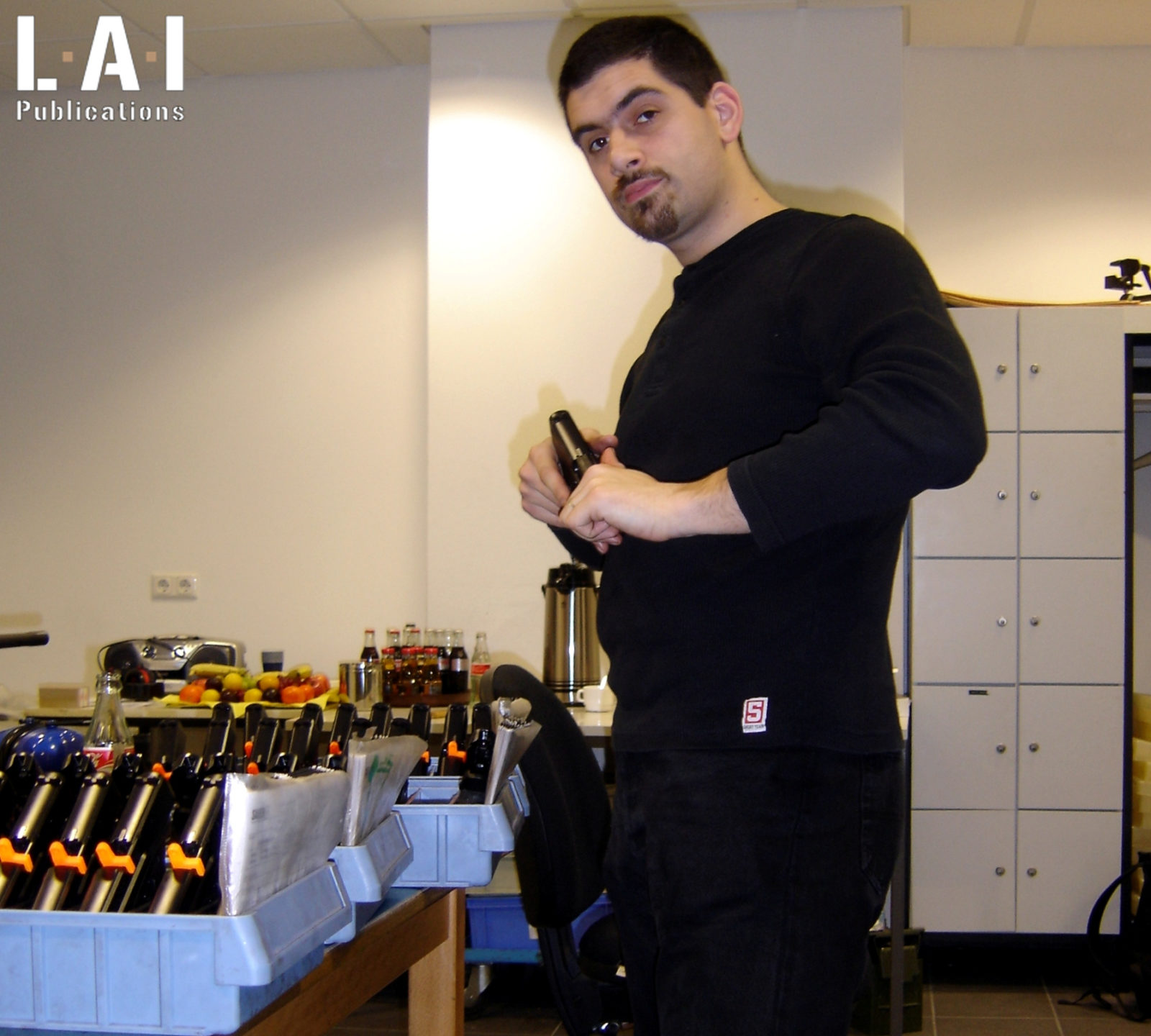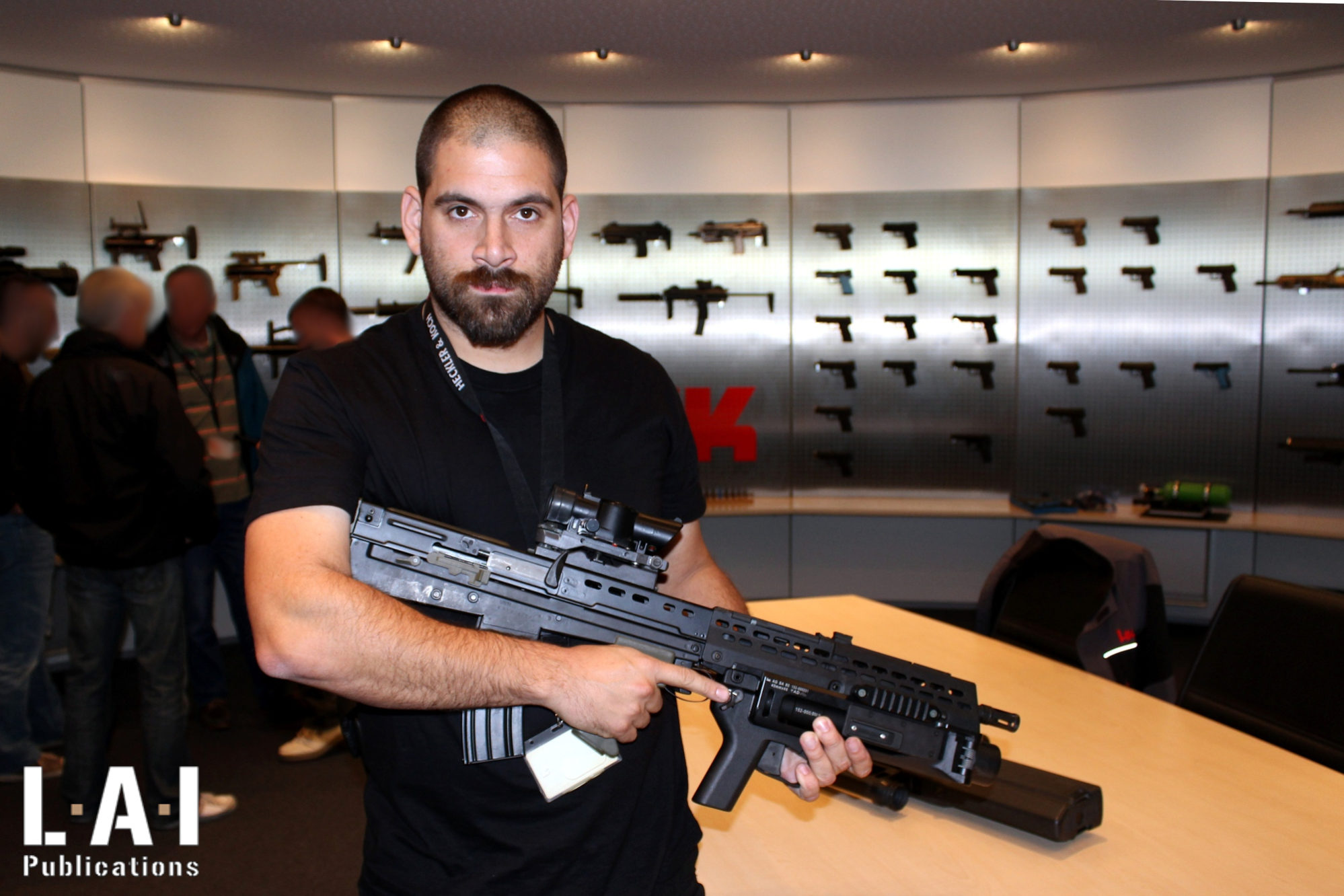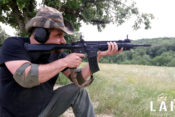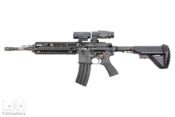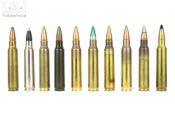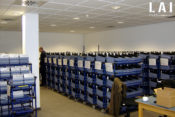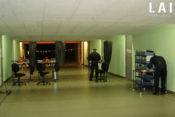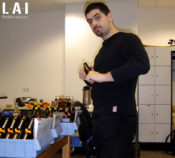About the HK 416 F of the French Army

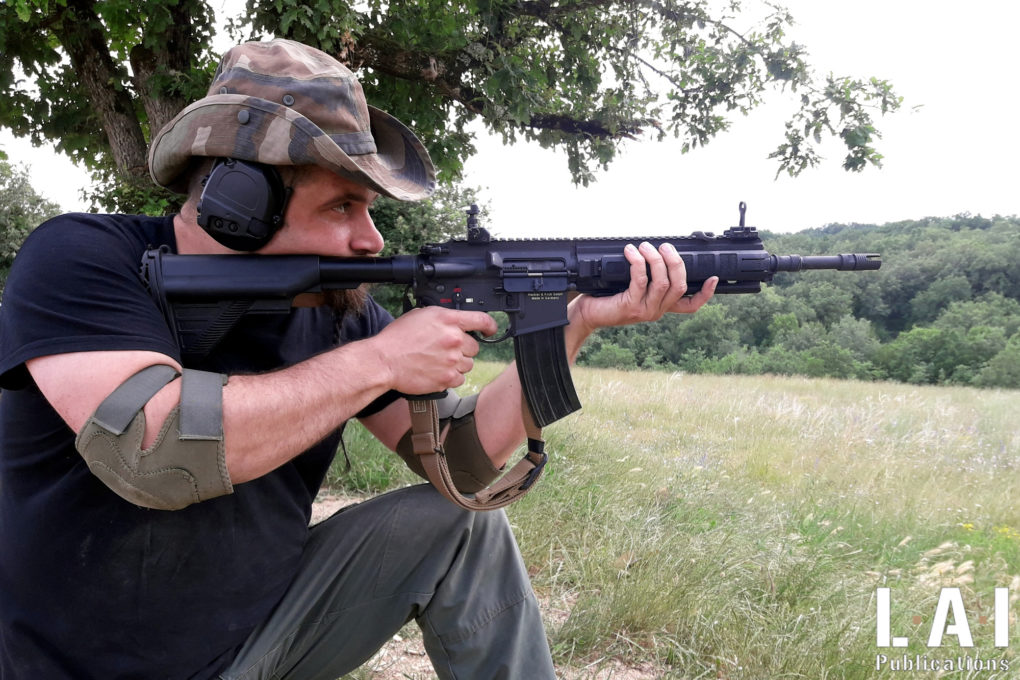
On September 22th, 2016, the French Army notified the German company Heckler & Koch of the purchase of 93,080 assault rifles. The French Army had set its gaze on 38,505 HK 416 F “standard version” (368 mm barrel) and 54,575 HK 416 F “short version” (279 mm barrel). The contract, the quantity of which has been revised upwards since its notification to exceed 100,000 weapons, thus covers the need for 5.56×45 mm rifles for the French Land Force, Air Force and Navy. We will not discuss here in any length on the details of a market that is far too recent, nor on the genesis of the HK 416 (although very interesting): we will simply draw up a list of facts and look at the urban legends that circulate in France concerning this weapon since its adoption by the French army.
From Special Forces to Regular Troops
Actually, when the French authorities selected the HK 416 following the call for tenders for the “Arme Individuelle Future” – or AIF – (“Future Individual Weapon”) the weapon was already well known in the French Army. Indeed, it had already been used, in different versions (including A2 and A5), by several specialized units for many years. Deployed in all theatres of operations of the French Army, it gave total satisfaction. Within these units, it underwent rigorous daily use and fired a truly humungous number of cartridges. But one point must be emphasized here: while its use is rigorous, the knowledge of the weapon and the care given to it within these units is usually (but not always) of a high standard. And that’s where we’re going to find a first warm-up point: entrusting new equipment to all users of a group as large as the French Army is the exposure to less academic uses.
If some might think that I am showing disdain for some of the soldiers of our Army (being French first and foremost), this is not the case. I have the utmost respect for every person who has chosen to devote their life for our country and in particular through the defense and security of the citizens of France. No, my criticism is not about individuals… but much more about the institution, in this case, the whole of the organs of the State in connection with the activity of the soldiers. This criticism is simply a listing of the situation following years of political choices in terms of the means (material and human) made available. That being said, let’s be clear: the weapon is generally less well used by less well-trained troops. And it sounds like a no-brainer when it’s stated; however, in the reviews we regularly hear about the 416 F since it entered service, this is never taken into account. As if only the weapon could be the culprit for every problem encountered.
However, this is obviously not the case. The commissioning of new equipment always requires an adaptation period, which will necessarily involve some form of learning. It’s not just about individual learning, it’s also about institutional learning. So, what is “institutional learning”? It is the fact that the institution modifies its “directives” (training, memo, logistics, etc.) as a result of feedback, particularly in the use that is made of the equipment, without it having been considered at the time of its commissioning. An example? Cleaning. While this is very generally carried out in the units, it is generally seen as a chore (by the troops as well as by the institution) that must be disposed of “quickly”. But as my beloved grandmother used to say: “fast and good are not friends“. First-level maintenance, provided by the user, is vital for the long-term use of the weapon, especially in theatres of operations. For those who want to know more about our vision on this maintenance, we have broken it down into 4 (chronological) steps that we have discussed in our book “Small Guide for Firearms” (linked here): disassembling, cleaning, inspection, lubrication. Each of these operations must be understood and applied in a thoughtful way, and certainly not the result of mindless automatisms. It must be taken into account that a cleaning carried out without analysis can lead to the omission of the control of certain parts of the weapon… Let’s randomly choose for the 416 F… well, what about the firing system? And in this specific case, the presence of foreign bodies (at random… small gravel?) in the firing system can have more than problematic consequences.
Another example? Even today, in the Armed Forces, there are people who believe that service weapons should not be lubricated. Believe in good faith (in particular by misinterpreting certain documents, builders or memos) … or don’t want to believe for “practical” reasons (lubricating being a messy operation), but that’s another debate. Thus, it is not uncommon to come across “dry” or “partially dry” weapons. This specific example will have two consequences:
- The steel parts of the weapon will oxidize (the various surface treatments do not offer absolute protection against oxidation).
- The weapon will cycle more slowly, which will get it closer to it for a sub-cycle threshold that is more prone to failure.
It is noted that compared to the FAMAS, the adoption of the HK 416 F has already changed a lubrication practice. Stored on horizontal racks themselves placed above drip trays, FAMAS were lubricated abundantly and regularly, and in particular, the inside of the barrel which was not chrome-plated. The 416 F has a chrome-plated barrel (bore and chamber), so these lubrication operations are no longer considered necessary by some people (our considerations on this subject are detailed in our book). Thus, by misinterpretation, some will believe that it is possible not to lubricate the weapon… at all! These are the same people who are surprised that their 416s oxidize while the FAMAS does not! Some soldiers even told us that they were reprimanded for lubricating their 416s…
Some will argue that the 416 F is “designed to run without oil”:
- On the one hand, this is not what is recommended by the manufacturer’s manuals of the various versions of the HK 416.
- On the other hand, if the 416 has passed the functional tests without lubrication imposed at the time of its selection, it must be understood that this is an “isolated” reliability test. It is complemented by other reliability tests (endurance, muds, sands, water, cold, etc.) but is also carried out in isolation. This means that there is no “endurance test in the mud with sand at -30°C and without oil”. Because looking for a weapon that works in such conditions… well, that’s believing in Santa Claus / Tooth Fairy (we hope we’re not making any mistakes here, but we think the audience of LAI Publications is well over 10 years old…).
It is important to understand that the appearance of a failure in a contemporary firearm of war is often of “multifactorial” origin. Thus, depriving the weapon of oil (which is intended for its normal operation) is to get a little closer to the threshold allowing the appearance of a failure.
Finally, let’s be clear: this lubrication problem is not a problem of the weapon, as we have just mentioned: it is a failure of the institution (through its instruction) or of the user (if the latter does not apply directives in accordance with it). So, try not to put oil in your car’s engine…
We have deliberately taken two examples that we know to be real difficulties that have been or are still encountered in the French Army. Are these issues related specifically to this weapon? Absolutely not: to date, “maintenance-free” weapons… don’t exist! All of them require proper cleaning, taking into account their specificities. All of them require a proper inspection, as all are subject to endogenous and exogenous fouling, wear, breakage and therefore failures. All of them require proper lubrication and not 4 drops of oil deposited on the 4 corners of the weapon. This last practice, inconsistent, is regularly peddled by many “sources”. Behind these sources, there are people who often don’t want to learn: questioning years of bad practice would probably be… too painful for their self-esteem. And this last point is precisely the key to the problem: if you don’t want to learn from your mistakes, you’re doomed to perpetuate them, again and again…
The HK 416, a “clone” of the AR-15?
To address this technically erroneous cliché, it is necessary to (quickly) go back to the origins of the HK 416. In the early 2000s, it was created by Heckler & Koch at the request of certain units of the US Army, and in particular the “1st Special Forces Operational Detachment–Delta” (1st SFOD-D), the famous “Delta Force”. The first variant delivered would be named “416D” with a “D” for Delta, after legal adventures that prohibited the use of the name “M4” by HK (Pic. 02). We say this because some people are spreading the rumor that the “D” is a mistake in the marking of the factory: at a time of increasingly restrictive technical standards and more and more exhaustive certifications, you really have to never have worked in a technical or production environment to support such nonsense. All manufacturing steps are subject to upstream validations and downstream verifications. The purpose of this HK 416D was therefore to make the weapons derived from the AR-15 more reliable, which generally give little satisfaction in this field while requiring exaggerated maintenance for weapons of this type. So obviously, the 416 takes up the lines of the American weapon. But if the German weapon uses the exterior lines of the American weapon and its ergonomics, it is indeed “under the hood” that we find fundamental differences. To make the weapon more reliable, the German manufacturer has replaced the irrational direct gas impingement system of the AR-15 (presented in detail in our article on the M16A1 linked here) by the short-stroke piston system of the G36. This last system – one of the best designed in the eyes of your servant – is a drastic game-changer in terms of operation: in other things, the weapon gets less dirty, heats up much less and can withstand overpressure without catastrophic failure.
(Note that the video was posted on YouTube … 15 years ago at the time of the article publication!)
But Heckler & Koch didn’t stop there. Since the first versions of the 416D, the German firm, which has focused on the reliability and optimization of all the elements of the weapon… to end up reviewing almost all the pieces. Obviously, when possible: one of the requirements of the American customer remains the compatibility between certain parts of M4 / M16 and HK 416 for logistical reasons. That’s the foundation of the creation of this weapon: to stay close to the AR-15 platform. For customers who are not attached to the AR-15 “platform” (so in our opinion, the most reasonable…) HK already had an outstanding technical solution in 5.56×45 mm: the G36. Finally, it should be remembered that the British army had also used the know-how of the German firm to make their L85A1 reliable: this version retrofitted in Germany will be called L85A2.
In the end, the weapon is very different from the model that served as its starting point. Meeting its demanding specifications, it is now widely used by “state-of-the-art” units at the 4 corners of the world when it comes to obtaining a particularly reliable 5.56 tool based on the lines of the AR-15. As for those who continue to defend tooth and nail the alleged superiority of the “Stoner system” with the help of totally biased tests in their protocols, while ignoring all the tests that put the weapon at fault, but also the unflattering retails… You can’t make a donkey drink it if it’s not thirsty. However, 60 years of historical evidence shatters their beliefs, which are only tinged with ideologies and certainly not with technicalities…Once again, more details in our article on the M16A1 linked here.
A compatibility issue with 5.56 NATO ammunition?
Here, the subject is actually that of a global understanding of the problem weapon/caliber/ammunition/standard. The subject is already widely covered on this same site through the following works:
- Chapter 4 of our “Small Guide for Firearms”: Caliber and Ammunition.
- .223 Remington – 5.56 – 5.56×45 – 5.56 NATO: A Technical and Standard story.
So, we’ll get straight to the heart of the matter: at the time of writing, no HK 416 has been NATO nominated! That’s it, it’s said. Neither those of the French Army nor the others. The list of “NATO Nominated Weapons” (NNW) “5.56 mm x45” caliber weapons (referred to in the MC-MOPI) as detailed in the October 2020 Multi-Caliber Manual Of Proof and Inspection (MC-MOPI) for NATO small arms ammunition, used to standardize ammunition, is as follows:
- FN Minimum Mk 1 (466 mm barrel length)
- Beretta AR 70/90 (450 mm barrel length)
- M16A2/A4 (505.4 mm barrel length)
- HK G36/A1 (480 mm barrel length)
- L85A2 (495 mm barrel length)
And that’s all of it!
Note that none of these weapons are short-barreled… while the 416 F, standard version has a barrel of only 368 mm. With all due respect to some, for 5.56×45 mm, it is already a short-barreled weapon. The NATO-standard length for optimal use of ammunition is generally between 450 and 500 mm (the “EPVAT” evaluation gun measures 508 mm, or 20 inches). And it’s no coincidence: the length of the barrel and the placement of the gas port on it is an essential component for standardizing ammunition to ensure, among other things, the functioning of a weapon. We refer you once again to the two works mentioned above, but to consider that all ammunition existing in a given caliber, even with similar specificity (bullet weight, V0, etc…), offers identical performance is a sham. People using this kind of deceptive shortcut simply want to save (again) the learning of a subject that is actually quite complex… but still affordable! You just have to take the trouble to learn… and to explain when you want to talk about it. But one certainly won’t turn that topic into 8-minute “clickbait” videos to flatter YouTube’s algorithm…
So yes, it would be perfectly possible to standardize optimized ammunition for shorter barrels. We can think here of the M855A1 ammunition specifically developed for the 368 mm barrel of the M4 and which is (according to the information at our disposal) “NATO compliant” (Pic.03). But be careful not to understand the thing backwards: this is a NATO standard ammunition that is adapted to the specificities of the M4. This does not mean in any way that all 368 mm weapons are interoperable with this ammunition (the 416 is not an M4 as we have seen), let alone with all NATO ammunition! No, it’s just a “custom rating” made by the U.S. authorities. And this is done by other armies, sometimes by adopting different ammunition for different weapons of the same caliber. And this is obviously feasible for our 416 F: it is “simply” up to the French institutions to ensure that the ammunition they buy is both “NATO interoperable” and compatible with the HK 416 F in these two versions. Sufficiently precise specifications simply need to be clearly stated to the ammunition manufacturers. And there is no doubt that French institutions are working the subject. For our part, we are confident about the solutions that will eventually be provided: the institution simply needs to learn.
Finally, it should be noted here that the difficulties related to the supply of suitable ammunition did not appear with the 416 F: they are almost consubstantial with the use of metal-cases ammunition and also existed with the FAMAS (with various problems just a few years ago)! Once again… Chapter 4 of our book.
A “Parkside” rifle?
Here is another persistent rumor: the rifles delivered are not of as good quality as those manufactured until then by the Oberndorf am Neckar firm. Strangely (or not…), we had heard exactly the same remarks at the time of the adoption of the SIG Sauer SP 2022 by the French Law Enforcement Forces. Anecdotally, we had met a person – unfortunately with a large audience at a civilian shooting range – who explained virulently to us that the SP 2022 was not manufactured by SIG Sauer… as we were returning from an inspection for a batch of 5000 weapons at the Eckernford factory, where we had the chance to visit the production lines. That was in 2007… less than 5 years after the commissioning of SP 2022 (Pics.04 to 07).
Thus, we can’t say that we’re surprised by this urban legend, which consists in making people believe that Heckler & Koch would “botch” or have subcontracted manufacturing (and we mean here, in its entirety or in its main components). It is even common to hear the weapon referred to as a “Parkside rifle”, the name of the budget brand proposed by a company, also of German origin: Lidl. So, firstly no, Parkside products are not necessary to throw away (if you don’t agree, come and discuss it with Arnold), and then, no clearly, HK did not botch or outsource the manufacture of this rifle… nor, to our knowledge, any weapon! We also visited the factory in Oberndorf am Neckar, admittedly, a few years before the adoption of the 416 by the French Army (Pics.08 and 09). As in all contemporary factories, the subcontracting of certain parts obviously takes place (pin, spring, etc., from memory with other German companies and often from the same Länder, Baden-Württemberg) and yet, we were really surprised to see how much autonomy HK retained in the manufacture of its parts. In fact, much more than from other manufacturers also visited in Europe… They also presented themselves as “high-end” manufacturers and whose boxes of parts from foreign countries (and not necessarily European) filled the premises…
Generally speaking, the use of subcontracting is economically necessary to remain competitive… and is not necessarily a symbol of a qualitative failure. Indeed, entrusting the manufacture of specific elements to companies specialized in these fields…well, it’s often a guarantee in terms of quality. Especially if the orders for parts are governed by rigorous specifications and adequate quality controls. But very often, the expression “subcontracting” is understood as “economical because of poor quality”. Here, too, you have to know how to review your language.
Regarding this allegation, it is also important to analyze the statement from an economic point of view: since the production chain of the weapon already existed before the award of the contract, how could it be profitable? The primary purpose of a production line is to be profitable, i.e., to fill the order book. The French Army’s original order (revised upwards since then), of 93,080 weapons delivered between 2017 and 2028 (yes… 11 years, here too, the schedule has been changed), that’s an average of less than 10,000 rifles to produce… per year! In other words, a workload plan that is probably perfectly acceptable for a company that generated 305 million euros in turnover in 2022 and supplies armies at the 4 corners of the world.
So, yes, the HK 416 F in these two versions has differences with other HK 416 delivered to other units; we can think of the 416A2 and A416A5 already used by French specialized units (come on, you expect it… the “Special Forces”) or the M27 IAR of the USMC, the 416A8 of the Bundeswehr, etc. But these differences are the ones that are linked to the demand of the French institutions: we speak here of “definition”. The weapon delivered fits a very rigorous and precise specification established by France: reliability in different circumstances (mud, sand, negative temperature, with and without lubrication …), endurance test (life expectancy of 31,000 rounds including 10,000 blanks… which is considerable), precision, solidity (and especially when at least 80 rifle grenades are expected to be fired) and so on and so on. To be exhaustive here would be to publish the specifications in full, which is not the purpose of this article. And it must be understood here that some specifications will “tend” towards different “production settings”. But the weapon delivered corresponds well to market specifications and is not a “budget” version of the weapon. On the contrary, this weapon has benefited from all the feedback from all the 416 variants before its adoption in the French army. Because let’s re-affirm it here: since the “416D” delivered to American units in the mid-2000s, HK has continuously perfected the 416.
Finally, do you really think that delegations from the French Army (including the DGA) did not visit the production lines in Oberndorf am Neckar on several occasions? Of course they did: it’s obvious… and even a certainty!
So, is replacing the FAMAS Mission: Impossible?
This is probably one of the Gordian knots, at least in the short term: like replacing the FAMAS… in the hearts of the French more than on the ground! More than an assault rifleAn assault rifle is a weapon defined by the use of an "inter... More, the FAMAS has become a symbol, and even a source of national pride. So, how would it be possible to replace this iconic weapon, with a foreign weapon, no matter how good it is. Because yes, the HK 416 is a good weapon of war.
Well designed for its time, the FAMAS was not a flawless weapon at the time of its adoption. It also required a time of adaptation and a certain number of adjustments and learning: as evidenced by dozens of sheets of “Technical Facts” and other “Express Notes” well-known to APC technicians (Armements Petits Calibres, Small caliber Armaments) of the regiments of France. So yes, after nearly 40 years of operational service, FAMAS has become a well-known workhorse, greatly mastered and even appreciated by a large part of its users (but clearly not all!) … but it is also and above all an ageing workhorse. Ageing because the weapon is now too far-off from the current “standards” of accessorizing and criteria in force in NATO member countries. Whether one is personally for or against these considerations of accessorizing and integration into NATO, this is in any case part of the equation and the requirements of our Armed Forces. Ageing because the existing weapons pool was itself at an advanced age. It must be added to this that the French industrial tool allowing it to remain in service was totally inadequate, if not almost non-existent. It is also this last point that did not make it possible to propose a French replacement weapon: no serious French industrial tool (in terms of knowledge and production capacity), state-owned or private, was capable of aligning itself with the needs of the French Army.
Of course, we can criticize or regret these states of affairs, but we must not fight the wrong battle: it is a question of criticizing (or not) the political decisions that have led to this situation… and not to go after an HK 416 which has duly won a call for tenders, and which satisfies many units around the world!
In Conclusion
It is necessary to understand here that the adoption of equipment in an army, a complex process, must fit a rigorously established set of specifications with regard to current and expected future needs. Some of these aspects are not palpable to the end user of the product. Thus, it is obvious that the weapon cannot meet the expectations of each user with its own desiderata… or even his fantasies. For this is also one of the problems: many people fantasize about a “miracle” product. But this product does not exist and probably never will. Faced with the disappointment of this impossible dream, we can either move forward, in a constructive way (learn, adapt, train), or take refuge in the nostalgia of a bygone time (and a bygone weapon) … themselves, too, fantasized.
Arnaud Lamothe
This is free access work: the only way to support us is to share this content and subscribe. In addition to a full access to our production, subscription is a wonderful way to support our approach, from enthusiasts to enthusiasts!


